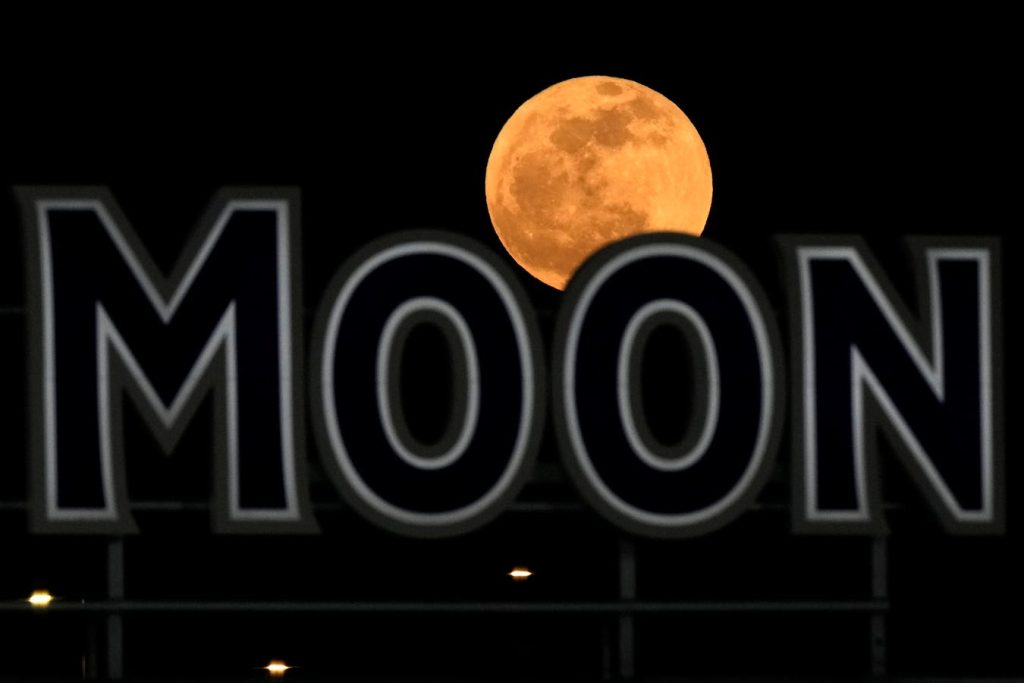The second full moon of spring 2024, known as the “Pink Moon,” rose in the northern hemisphere on April 23 and was captured in stunning photographs from around the world. While the moon is not actually pink, it is named after the color of the spring flowers that bloom at this time of year. The “Pink Moon” was best seen at dusk and was visible throughout the night, rising in the east at sunset and setting in the west at sunrise.
Named by Native American tribes, the “Pink Moon” has several other names including “Sprouting Grass Moon,” “Growing Moon,” and “Hare Moon.” During its appearance, the moon briefly took on an orange hue for 15-20 minutes due to the viewer seeing it through the thickest layer of Earth’s atmosphere. This phenomenon occurs as red and orange light can easily pass through the atmosphere, while blue light gets scattered by particles, resulting in an orange appearance.
The “Pink Moon” marked the first full moon since the total solar eclipse that occurred on April 8. While only a new moon can cause a solar eclipse, only a full moon has the ability to cause a lunar eclipse. The next lunar eclipse will be a partial lunar eclipse on September 17, best seen in North America, South America, Europe, and Africa. During this event, the full moon will enter Earth’s shadow, a phenomenon that can only happen when the moon is on the opposite side of the Earth from the sun.
Upcoming full moons include the “Flower Moon,” which will occur on May 23, 2024. The celestial event provided a beautiful sight for stargazers and photographers alike, showcasing the natural beauty of the cosmos. With the rise of digital technology and social media, people were able to share their images of the “Pink Moon” from different locations around the globe, bringing the wonder of the night sky to a wider audience.
The “Pink Moon” serves as a reminder of the interconnectedness of the natural world and the beauty that can be found in the changing seasons. As the Earth continues its orbit around the sun, celestial events such as full moons and eclipses offer opportunities for people to come together in awe and appreciation of the universe. With each passing lunar cycle, the night sky presents new wonders to explore and marvel at, encouraging us to look up and appreciate the beauty that surrounds us.
As the world eagerly anticipates the next celestial event, the “Pink Moon” remains a shining example of the wonders of the night sky. With clear skies and wide eyes, viewers are encouraged to continue looking up and exploring the mysteries of the cosmos, finding inspiration and beauty in the celestial phenomena that grace our planet.


